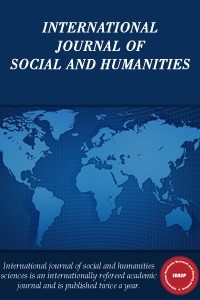FATHER’S ARCHETYPE IN THE ART OF GRIGOL ROBAKIDZE
In the 20s of twentieth century, in Georgia, after taking power by the Soviet to-talitarian government, for the purpose of unification of the public consciousness, the Soviet government launched the mechanism of ideological dictatorship. Modernist ideological-esthetic principles accepted in Georgian literature from the European modernist trends contradicted to the soviet ideology. Socialist real-ism became the dominating discourse model. Some writers bowed to the ideo-logical dictatorship while the others ardently resisted the totalitarian government.
Keywords:
Father’s Archetype, emigrant eternal returning,
___
- Bakradze, A (1999). Cardu or Grigol Robakidze's life and merit. Lomisi. Tbilisi.
- Bregadze, k. (2016). Typology of Georgian Modernism. Meridiani. Tbili-si.
- Eliade, M. (2009). Aspects of a myth. Ilia State University. Tbilisi. Tbili-si.
- Eliade, M. (2017). The myth of the eternal return. Elf. Tbilisi.
- Robakidze, G. (1928) Robakidze Gr. Das SchlangenHemd. Roman. Diederich Verlag. Leipzig.
- Robakidze, G. (1997). The Snake’s Skin. Georgian prose, volume XXX. Georgia. Tbilisi.
- Robakidze, G. (1996). Vazha Engad. For me the truth is everything. Jekservise. Tbilisi.
- Robakidze, G. (2012). The first fear and Mythos. Demon and Mythos. The book was translated from German into Georgian by Manana Kvataia. Artanuji. Tbilisi.
- Robakidze G. (2016). Letters to Stefan Zweig. The book was translated from German into Georgian by Natia Furceladze. Artanuji. Tbilisi.
- ISSN: 2602-3288
- Başlangıç: 2017
- Yayıncı: Tuncay AYDEMİR
